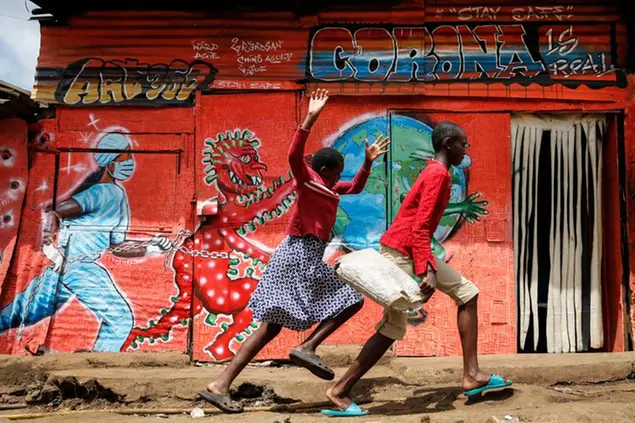- Soon it will be the first anniversary of the pandemic. New lessons and new questions will emerge, particularly about the public role of science, and doctors and scientists, in the response to the disease.
- Health authorities must communicate with governments to take effective action. Society must also get involved. In other words, a dialogue must be established between politicians, doctors and scientists and society as a whole.
- This 2020 pandemic will affirm the relevance of science over irrationality in politics and give scientific knowledge, and vaccination in particular, a more central place in our societies.
Soon it will be the first anniversary of the pandemic, or to be more precise, it will be one year after the identification of the first cases of Covid19.
New lessons and new questions will emerge, particularly about the public role of science, and doctors and scientists, in the response to the disease.
Covid19 was able to magnify previous patterns of response to the disease. The emergence of a new infectious disease is news only when the hosts are humans or it affects organisms that are of importance to humans, when it is fatal, and when we cannot stop transmission between individuals.
And that's when the possible solutions are put in place. Health authorities must communicate with governments to take effective action. Society must also get involved in the issue. In other words, a dialogue must be established between politicians, doctors and scientists and society as a whole.
In 2020, the scientific world has been able to develop technologies to identify, monitor and prevent the transmission of this new virus in record time, but even so the effects of this new disease have been devastating.
Let's review the recent history. A year has passed since a first cluster of cases of pneumonia of unknown origin was detected in Wuhan, China. By January 3, 2020, the Chinese authorities reported to the WHO the presence of the virus in patients.
In the second week of January, researchers from China and Australia announced the sequence of the viral genome of the coronavirus, which they called SARS-CoV-2 because of its similarity to the one that caused the crisis of 2002-2003.
Vaccine development during global epidemics
To understand the speed of scientific discoveries of this pandemic, it is enough to remember that during the SARS outbreak it took almost six months to identify the virus that caused it. Scientific development has been such that it is likely that a certain population at risk will be vaccinated in the coming weeks, with novel vaccines, which for now show an efficacy of more than 90 per cent.
In recent epidemics such as H1N1 flu (2009), Ebola (2014-2016) and Zika (2015-2017), vaccines were not developed in time. In some cases, such as the H1N1 flu, they eventually reached the population, once the epidemic had reached its maximum peak and in other cases, such as Zika or SARS, they never finished developing.
In 2020 science has resources that it did not have during other pandemics. In 1918, a new lethal disease appeared, the so-called “Spanish flu.” The world was at war and in the midst of so much chaos, this new virus appeared. There was no medical maneuver or treatment that could cure the flu or pneumonia. The only thing that could save patients was to keep them alive until the flu passed with warm food, blankets, and clean air being the main means of protection.
In Latin America there were several reactions, also marked by how little was known about the disease. For example, in Buenos Aires, according to historian Jaime Bortz by the end of October 1918, the large number of patients caused the Public Assistance Directorate to put into practice the advice of specialists, prohibiting public spectacles in closed premises, banning meetings in cafes after certain hours and closing schools for 10 days.
The quarantine of travelers arriving from Europe was also ordered and people were asked to avoid public crowds. Despite these measures, in October 1918 in Buenos Aires 1.000 people died from the flu. Little did the doctors know how to cure the disease once it had occurred. In this sense, Latin America was no different to the United States where the doctors and scientists struggled to understand the disease before people died. In total 675.000 Americans died of the disease.
The lack of knowledge to combat the disease was not limited to the Western Hemisphere. The writer Jorge Luis Borges recalling his years in Switzerland said, «I have a memory about the eucalyptus trees: there was a Spanish flu epidemic after the first war; then there were big cauldrons in which they burned eucalyptus leaves – it was supposed to be curative».
The relevance of science
This lack of a connection between experts and effective expertise is absent today. Doctors and scientists have generated viable results. Despite the terrible losses one thing is clear, when governments and people followed the advice of experts, especially the use of masks and social distancing, the disease could be managed more efficiently.
In the countries where the disease spread the most (the US, Brazil and India), the opposite happened. When politicians replaced experts like Donald Trump did in the US or Jair Bolsonaro did in Brazil, the effects were lethal for the population. Their recommendations without any scientific basis such as false cures or miracle cures (Trump and Bolsonaro) or even against the vaccine (Bolsonaro) achieved the dubious outcome that many of their followers ignored the recommendations of epidemiologists, doctors and scientists.
Unlike the resignation, and the lack of meaningful scientific results of 1918, this 2020 pandemic will leave some important lessons for our future. It will affirm the relevance of science over irrationality in politics and give scientific knowledge, and vaccination in particular, a more central place in our societies. When science advances we must listen to the experts.
© Riproduzione riservata


